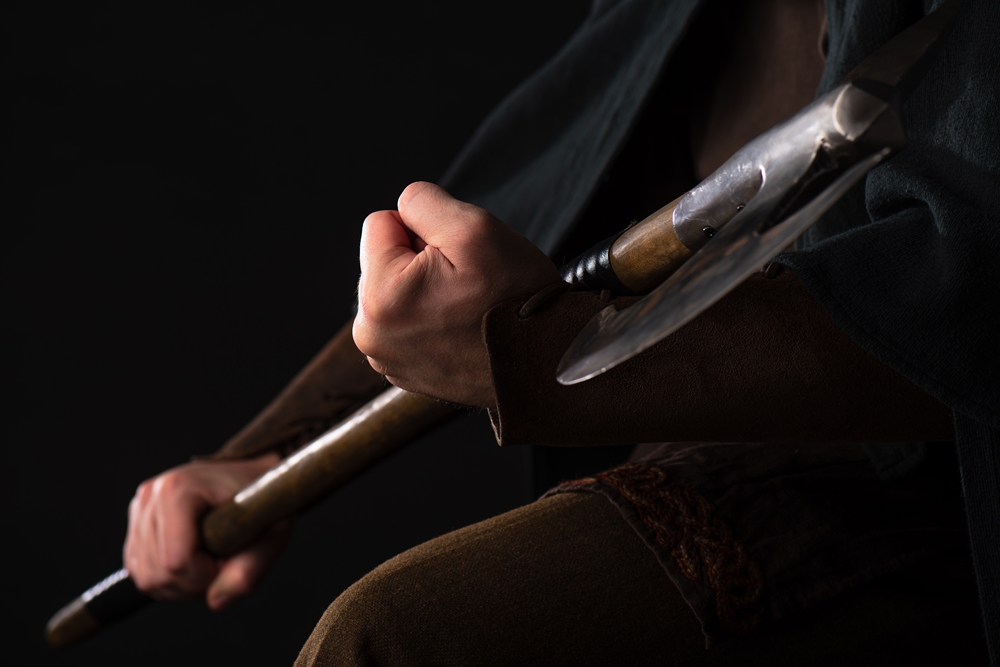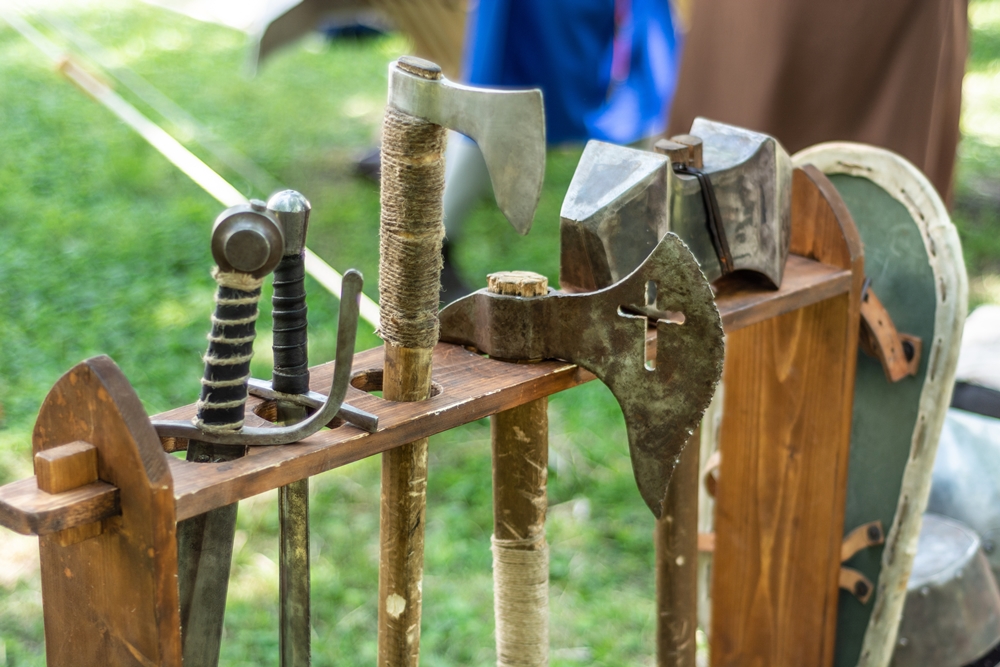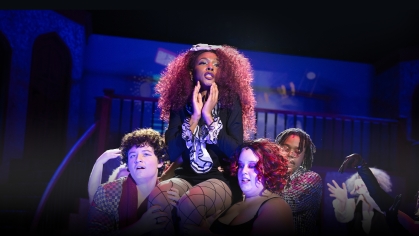Medieval Period of The Green Knight Parallels Current Age of Crisis, Explains Professor
The Green Knight opened nationwide on July 30, taking a new generation of moviegoers on an epic medieval fantasy adventure.

As the story goes, Sir Gawain – lesser known than Sir Lancelot, but an important figure in the Arthurian cycle of stories, explains Aaron Hostetter – is confronted with a challenge by the giant Green Knight and risks his life to prove himself to his family and the king.
For Hostetter, a Rutgers University–Camden researcher, the period when the original story was written – in the late 14th century – may have parallels to the current day. He notes that Ricardian England (c. 1377–1400) was the start of a difficult century. The Black Death had smashed England in 1350 and never went wholly away for centuries, and there were crises of church and faith, the aristocracy, problems with traditional labor arrangements, and the dominance of mercantile wealth and cash economies, among other problems.
“In some ways, Sir Gawain and the Green Knight articulates a jaded, cynical view of chivalric society; a nostalgic ideal of that was never enough,” he says. “That sense of nostalgia we share is what haunts me the most – we are a culture dying of nostalgia poisoning.”
Much like today, he says, the tribulations of the 14th century destroyed many of the previous political, economic, and social structures – and there is no going back to life as we knew it.
“Humanity sits at a crisis unlike anything previously experienced,” he says. “A medieval text from an analogous moment may give us ideas about how such crises have been thought through before.”

“Humanity sits at a crisis unlike anything previously experienced. A medieval text from an analogous moment may give us ideas about how such crises have been thought through before.” – Aaron Hostetter
The film – based on a legend more than 700 years old – may seem timely, continues the Rutgers–Camden researcher, but should the story come with a disclaimer?
“‘Finally!’ was my first thought,” recalls the associate professor of English. “But just as quickly, I thought, ‘Oh no, these never turn out well.’”
Nonetheless, says the Collingswood resident, his job as an educator and public medievalist extends from his desire to challenge easy and fallacious myths about the Middle Ages, so that people can see how much of present-day culture depends upon very selective readings of medieval texts and medieval history.
“So even a lousy or lazy adaptation gives me grist for the mill,” says Hostetter, who sees the original poem as a satirical evaluation of the aristocratic values that shaped literature and influenced the tastes of bourgeois readers.
However, Hostetter continues, “happily,” he was wrong.
“I thought director and screenwriter David Lowery’s adaptation slapped — it was a true revisioning of the poem’s deeper issues,” says the Rutgers–Camden researcher.
Hostetter is admittedly not sure if the film will be a box office success, since the poem doesn’t quite map onto the assumptions many fantasy and role-playing game fans have of medieval adventure stories.
“If I were making analogies, Sir Gawain and the Green Knight is the chivalric equivalent to a Jane Austen novel,” he says. “There is hardly any violence onscreen, the sexual tension is implicit, the conflict almost entirely internal, psychological.”
Then what is the enduring significance or fascination with this centuries-old story?
According to the Rutgers–Camden researcher, anything featuring knights and ladies has resonated with generations of readers – and for many reasons. Many readers, he says, have a “seemingly instinctual” fascination with wealth and status. The idea of chivalry preoccupies huge swaths of society, influencing gender roles, how masculinity presents itself, and how subcultures of conflict – such as soldiers – imagine themselves and would like others to see them.

The Rutgers–Camden researcher explains that anything featuring knights and ladies has resonated with generations of readers – and for many reasons.
Moreover, Hostetter notes, the romance has been the most popular genre of secular literature of the European Middle Ages. There are about 60 existing stories in Middle English, most of which are extant only in a single copy. Probably the biggest misconception about these poems, he says, is that they were necessarily by the aristocracy, for the aristocracy.
“The majority of transmission and circulation evidence we have for these stories show that they are mercantile, upper bourgeoisie in audience – wealthy, perhaps more so in some ways than the gentry, but not aristocratic,” he says.
Another “way cool” fact, he adds, is that many of these romances are found alongside practical texts such as conduct manuals – poems about how to behave properly in good society.
“These pairings suggest that the romances may have been thought instructive and educational,” he says. “Certainly, the retainers at Hautdesert [a mysterious castle Gawain finds near his destination] thought of Sir Gawain’s presence among them in the same way: a chance to learn some fancy, southern, high-class manners.”
So, are examples of these elements alive and well in other popular stories today?
Absolutely, he says. “Right down to our obsessive fascination with the ways that the 1% live; to idolize them as role models.”
The most fun example of this fascination, he says, might be the current explosion of superhero movies.
“The Avengers as a part of the Marvel Cinematic Universe are just the King Arthur stories given colorful costumes and big explosions,” says Hostetter. “The poem spends six luxurious stanzas describing Gawain getting ready for his quest, including the details of his shield. Compare this to a montage of Tony Starks strapping on the Iron Man costume in the first movie.”


